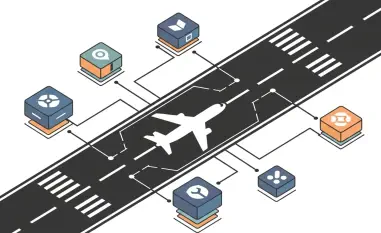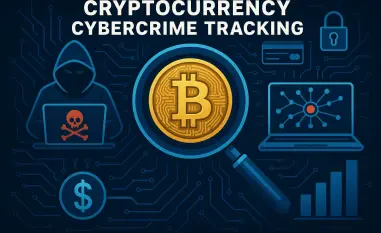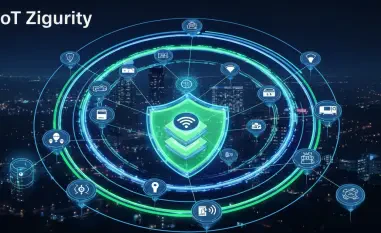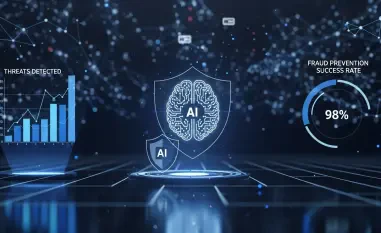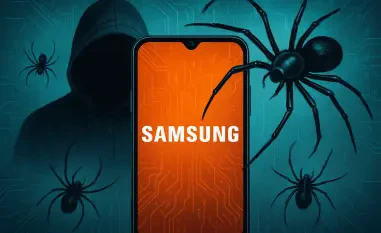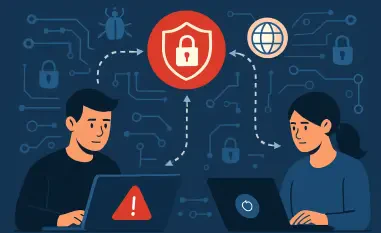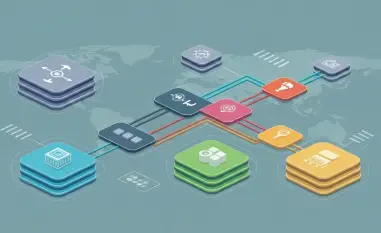In the fast-evolving landscape of cybersecurity, phishing remains one of the most formidable threats in 2025, relentlessly challenging security protocols. To shed light on critical insights and the transformational shifts necessary to counter these threats, we spoke with Malik Haidar, a seasoned cybersecurity expert who has been at the forefront of tackling security challenges in multinational corporations.
Can you explain why phishing remains the fastest-moving cyber threat in 2025?
Phishing persists as a swift-moving threat due to the increasing use of sophisticated tactics that constantly evolve to evade defenses. With attackers expanding their tactics to mimic trustworthy sources, it becomes a race against time for organizations to identify and neutralize these threats. The adaptability and rapid deployment capabilities of phishing make it more critical than ever for cybersecurity professionals to stay vigilant and proactive.
How does the 2025 KnowBe4 Phishing By Industry Benchmarking Report emphasize the importance of transforming a workforce into a security asset?
The report underscores the concept that the workforce is the most significant attack surface, and by extension, can also be the strongest defense. Employees, once educated and trained, serve as a frontline barrier against phishing attempts. The transformation of employees through security awareness training is vital because it empowers individuals to recognize and report phishing attacks, effectively turning them into assets that actively participate in protecting company data.
What does the statistic from the Verizon Data Breach Investigations Report reveal about the urgency of responding to phishing emails?
The Verizon report highlights an alarming fact: it takes just 49 seconds for someone to fall victim to a phishing email by entering credentials. This statistic points to the critical need for rapid response mechanisms and real-time protection. Security teams must be prepared to act swiftly in blocking malicious attempts as soon as they’re identified, as there’s an extremely small window before the potential damage occurs.
Can you provide some context on the increase in phishing email volume and sophistication in recent years?
There has been a notable surge in phishing email volume, coupled with sophistication that allows these emails to bypass traditional security measures. Attackers exploit advanced techniques and tools, making phishing emails more convincing and harder to detect. This increase not only in quantity but also in quality challenges existing protective measures, urging businesses to constantly update their defense strategies and invest in AI-driven solutions.
How has AI contributed to the evolution of phishing threats, and what challenges does it bring to traditional defenses?
AI has significantly enhanced phishing threats by enabling attackers to craft more personalized and convincing emails that easily evade pattern-based detection systems. AI algorithms allow automated adjustments in tone and content based on the target’s profile, increasing the likelihood of successful deception. This rapid evolution of threat tactics puts traditional defenses at a disadvantage as they struggle to cope with this new level of sophistication.
Beyond AI, what other factors contribute to the increased risk of phishing attacks?
In addition to AI, factors such as Business Email Compromise (BEC) and vulnerabilities in digital transformations add to the risk. The interconnectedness of supply chains and incomplete integration of digital systems provide more opportunities for phishing attempts. Yet, human behavior remains a persistent risk factor, as social engineering continues to exploit human psychology effectively.
What were the findings of KnowBe4 regarding the Phish-prone Percentage (PPP) before training?
KnowBe4’s research showed a troubling baseline PPP of 33.1%, meaning one out of every three employees was likely to click on a phish. This percentage underscores the susceptibility of the workforce to security breaches before undergoing any form of structured training. It indicates a critical area of improvement where training can make a significant difference.
Could you discuss the specific industries that have higher baseline PPPs and why they might be more vulnerable?
Healthcare and Pharmaceuticals, Insurance, and Retail sectors show higher baseline PPPs, primarily due to the sensitive nature of the data they handle and the intricate networks they operate within. These industries are attractive targets for attackers due to the high value of stolen data, and their complex operations often lead to inconsistencies in security measures and awareness among diverse employee roles.
How does the size of an organization play a role in phishing vulnerability and risk?
Larger organizations tend to be more vulnerable simply because they have more entry points for attacks. With vast numbers of employees, achieving consistent awareness and compliance becomes challenging. They also face the difficulty of ensuring that security policies are effectively communicated and enforced across all levels of the workforce.
What impact does effective security awareness training have on reducing phishing risk, according to the data?
Security awareness training drastically reduces phishing risk, evidenced by a global PPP drop of 86% after a year of continuous training. This massive reduction illustrates the effectiveness of employee education in recognizing and responding to phishing attempts, showcasing empirical proof that a well-informed and trained workforce is the best defense against phishing threats.
How does the reduction in PPP vary between different sizes of organizations after one year of training?
Regardless of size, all organizations experienced significant PPP reductions, ranging from 85% to 93% improvement rates. Larger enterprises saw dramatic decreases from high starting points, while small and mid-sized organizations also recorded impressive gains despite having fewer resources. This shows that tailored training programs can be equally effective irrespective of the organization’s scale.
What successes have large enterprises achieved in reducing phishing vulnerability through security awareness training?
Large enterprises have achieved remarkable results by slashing their PPPs from over 40% to single digits, especially in high-risk industries like Healthcare and Retail. This success comes from integrating robust training programs that are tailored to their complex operations, thus effectively mitigating the heightened vulnerability associated with their size and diverse workforce.
In what ways do mid-sized organizations show resilience against phishing attacks despite limited resources?
Mid-sized organizations demonstrate resilience by leveraging adaptable security strategies and prioritizing essential components of awareness training. Even with limited budgets, these organizations manage to improve by focusing on high-impact training initiatives, proving that resource constraints can be overcome with strategic planning and prioritization.
Can you elaborate on how small organizations with seemingly lower baseline risks still face significant phishing threats?
Small organizations, despite having a lower baseline PPP, are not immune to significant risk due to their perceived lower defenses and enticing attack surface for cybercriminals. Attackers exploit the idea that smaller organizations might overestimate their safety, making consistent and tailored training even more crucial for maintaining robust security.
What are the key takeaways from KnowBe4’s phishing report regarding traditional defenses and human error?
The report drives home the message that while technological defenses are crucial, they are not sufficient alone. Human error remains a central vulnerability that requires an ongoing commitment to awareness and behavior training. Bridging the gap between technology and human awareness is vital for creating a holistic security posture capable of withstanding sophisticated attacks.
How can organizations leverage AI-powered email security and behavior-based threat detection to enhance their defenses against phishing?
Organizations can enhance defenses by integrating AI-powered email security systems that use advanced threat intelligence and behavioral analytics to detect subtle phishing patterns. Behavior-based threat detection allows real-time monitoring of email interactions, offering immediate coaching to employees identified at risk, thus preventing potential breaches more effectively.
What steps should organizations take to embed a company-wide culture of security?
Building a security-centric culture starts with leadership commitment, followed by comprehensive and continuous education at all levels. Organizations should ensure regular communication about security updates, integrate security practices into daily workflows, and recognize and reward secure behavior. Over time, this culture will naturally instill security awareness as part of the organizational ethos.
Why is it important to view phishing resilience as a long-term commitment rather than a one-time solution?
Phishing resilience demands long-term commitment because the threat landscape is ever-evolving. Cybercriminals constantly devise new techniques, thus ongoing training and adaptation are vital. Consistent improvement and reinforcement lead to lasting behavioral change, reducing risks more effectively than one-off interventions could achieve. It’s about building sustainable defenses that mature alongside emerging threats.
What additional insights can be found in the full KnowBe4 report across different industries and regions?
The complete KnowBe4 report offers a comprehensive analysis of phishing trends, risks, and mitigations specific to various industries and geographic regions. It highlights sector-specific threat vectors and explores regional variations in threat landscapes, providing a valuable resource for tailoring security strategies to specific organizational contexts. Through these insights, organizations gain a nuanced understanding of their unique risk environments and how to address them.


